
Carmichaelia is a genus of 24 plant species belonging to Fabaceae, the legume family. All but one species are native to New Zealand; the exception, Carmichaelia exsul, is native to Lord Howe Island and presumably dispersed there from New Zealand.

Carmichaelia carmichaeliae is a species of plant in the family Fabaceae. It is found only in South Island of New Zealand. It is classified as having the "Nationally Critical" conservation status under the New Zealand Threat Classification System.

Carmichaelia glabrescens is a species of plant in the family Fabaceae. It is found only in New Zealand.

Carmichaelia torulosa is a species of plant in the family Fabaceae. It is found only in New Zealand.
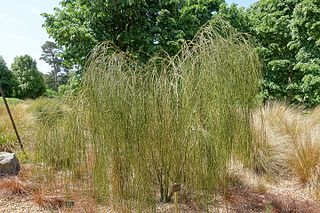
Carmichaelia stevensonii, the cord broom or weeping broom, is a species of plant in the family Fabaceae. It is found only in the north east of the South Island of New Zealand. It is threatened by habitat loss.

Carmichaelia muritai, common name coastal tree broom, is a species of plant in the family Fabaceae. It is found only in the South Island of New Zealand.

Carmichaelia astonii is a species of pea in the family Fabaceae. It is found only in South Island of New Zealand. Its conservation status (2018) is "Nationally vulnerable" under the New Zealand Threat Classification System.

Alternanthera nahui, common name nahui, is a species in the family Amaranthaceae, native to New Zealand and to Norfolk Island.
George Simpson (1880–1952) was a New Zealand naturalist and botanist. He was born in Dunedin, the son of a master builder. He, too, became a builder and valuer, working as Crown Valuer from about 1943 until early 1950. However, he, together with John Scott Simpson, became interested in collecting and growing New Zealand native plants and by 1925 both were well known within the New Zealand botanical community.
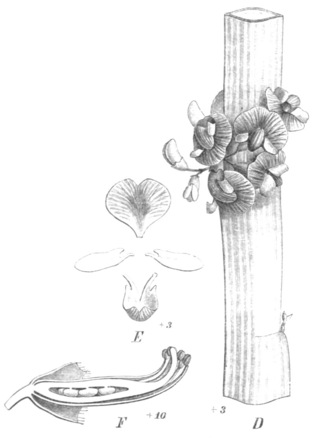
Carmichaelia australis, commonly known as the New Zealand common broom or mākaka, is a shrub of the Fabaceae family. It is native to New Zealand and found in both the North and South Islands.
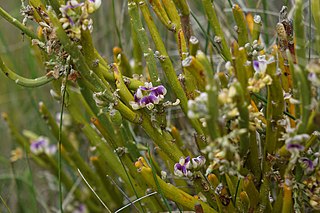
Carmichaelia hollowayi, commonly known as Holloway's broom, is a species of plant in the family Fabaceae. It is found only in the South Island of New Zealand. Its conservation status (2018) is "Nationally Critical" under the New Zealand Threat Classification System.
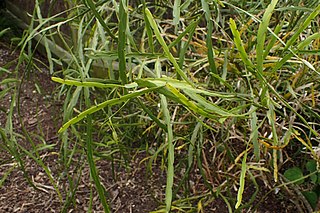
Carmichaelia williamsii is a species of plant in the family Fabaceae. It is found only in the North Island of New Zealand. Its conservation status (2018) is "At Risk (relict)" under the New Zealand Threat Classification System.
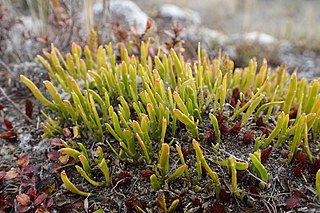
Carmichaelia nana is a species of plant in the family Fabaceae. It is found in both the North and South Islands of New Zealand. Its conservation status in 2013 was assessed as "At Risk (declinining)" under the New Zealand Threat Classification System, but in 2018 its risk under the same system became "Threatened-Nationally Vulnerable".
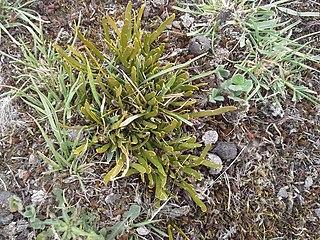
Carmichaelia corrugata is a species of plant in the family Fabaceae. It is found only on the South Island of New Zealand.

Plantago aucklandica is a species of flowering plant in the family Plantaginaceae that is endemic to the subantarctic Auckland Islands, New Zealand. Joseph Dalton Hooker described P. aucklandica in his Flora Antarctica in 1844. Plants of this plantain are large with large leaves, up to seven veins, wide petioles, colliculate seeds, and long spikes with dozens of flowers and one-seeded fruits. This species in considered to be At Risk - Naturally Uncommon, as it is an island endemic with a restricted range.
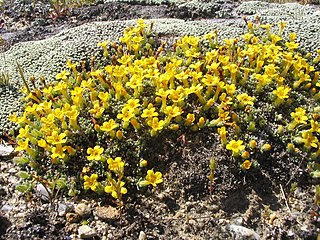
Myosotis uniflora is a species of flowering plant in the family Boraginaceae, endemic to the South Island of New Zealand. Joseph Dalton Hooker described the species in 1867. Plants of this species of forget-me-not are perennial with a prostrate, compact, cushion or mat habit, short bracteate inflorescences, and cream to yellow corollas.
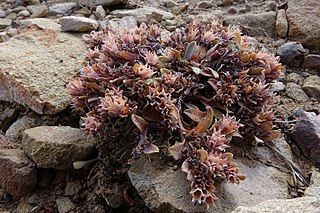
Myosotis glauca is a species of flowering plant in the family Boraginaceae, endemic to the South Island of New Zealand. George Simpson and J.S. Thomson described M. pygmaea var. glauca in 1942, and Peter de Lange and John Barkla recognized it at species rank in 2010. Plants of this species of forget-me-not are perennial with a prostrate habit, bracteate inflorescences, white corollas, and often glaucous grey leaves.

Myosotis rakiura is a species of flowering plant in the family Boraginaceae, endemic to southern South Island and Stewart Island/Rakiura of New Zealand. Joseph Beattie Armstrong described the species in 1881. Plants of this species of forget-me-not are perennial rosettes which form loose tufts or clumps, with ebracteate, erect inflorescences, and white corollas with exserted stamens.
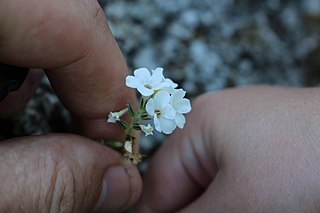
Myosotis lytteltonensis is a species of flowering plant in the family Boraginaceae and a synonym of Myosotis australis. It was first described as a variety of M. australis, considered endemic to the South Island of New Zealand, then raised to species status, and subsequently synonymised with Myosotis australis in 2020. Plants of this species of forget-me-not are perennial rosettes with ebracteate inflorescences and white or yellow corollas with stamens that are fully included in the corolla tube or sometimes partly exserted.

Plantago picta is a species of flowering plant in the family Plantaginaceae that is endemic to New Zealand. William Colenso described P. picta in 1890. Plants of this species of plantain are perennial with a rosette habit, leaves widest above the middle, up to 5 ellipsoid seeds per capsule, and bracts with hairs along the edges but otherwise glabrous. Its conservation status is At Risk – Naturally Uncommon.






















